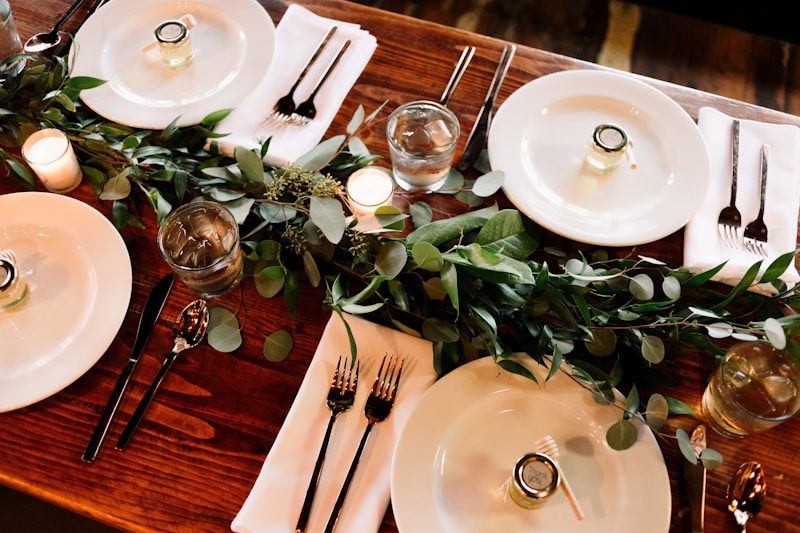Incorporating Cultural Elements into Bridal Attire: A Journey Through Tradition and Modernity
Bridal attire has long been a significant aspect of wedding ceremonies worldwide, serving not only as a fashion statement but also as a reflection of cultural traditions and values. Incorporating cultural elements into bridal attire has become increasingly popular, allowing brides to honor their heritage while embracing contemporary styles. This article explores various ways to infuse cultural elements into bridal fashion, the significance behind these choices, and how this trend is reshaping weddings globally.
The Significance of Cultural Elements in Bridal Attire
Culture is an integral part of an individual's identity, and for many brides, their wedding day is a culmination of traditions, family legacies, and personal stories. Incorporating cultural elements into bridal attire allows brides to:
- Celebrate Heritage: Wearing traditional dresses or accessories can honor family history and cultural roots.
- Create Meaningful Connections: Choosing specific colors, patterns, or symbols can provide a sense of belonging and connection to one's community.
- Blend Modern and Traditional: Brides can creatively fuse contemporary styles with cultural attire, reflecting their personalities while respecting traditions.
Exploring Various Cultural Elements in Bridal Attire
Brides can explore an array of cultural elements from different backgrounds to create a unique and meaningful bridal look. Below are some prominent examples:
Asian Influence
In many Asian cultures, colors play a crucial role in bridal attire. For instance, in China, brides often wear red dresses (cheongsam or qipao) symbolizing happiness and good fortune. In contrast, Indian brides traditionally adorn themselves with intricately designed lehengas or sarees, featuring vibrant colors and detailed embroidery. The use of gold and jewelry, such as the maang tikka and jhumka earrings, enhances the cultural significance.

African Inspiration
African bridal attire is known for its bold colors and unique patterns, often showcasing traditional fabrics like kente or ankara. Brides may choose to wear garments such as the Nigerian Aso Oke, which combines richness with cultural heritage. Additionally, intricate beadwork and head wraps are common, allowing the bride to embody her heritage and style simultaneously.
European Traditions
European weddings also highlight cultural influences. In Greece, for instance, brides often wear lace wedding gowns infused with traditional elements and may include a crown ( Stefana) made of flowers or leaves to symbolize unity. In Scotland, the concept of wearing tartan patterns can represent clan heritage, making the bridal attire deeply personal.
Table: Cultural Bridal Attire by Region
| Region | Bridal Attire | Key Features |
| Asia | Cheongsam, Lehenga | Bright colors, intricate embroidery, traditional jewelry |
| Africa | Aso Oke, Ankara Gowns | Bold colors, unique fabric patterns, beadwork |
| Europe | Lace Gowns, Tartan Dresses | Use of lace, floral crowns, clan colors |
| America | Western-style Dresses | Elegant silhouettes, modern fabrics, lace details |
Modern Trends in Incorporating Cultural Elements
As globalization continues to influence the fashion industry, modern brides are increasingly willing to step outside traditional norms. Designers now offer collections that celebrate cultural diversity, allowing brides to choose elements from different cultures. Some popular modern trends are:
Mixing Styles
Brides are opting for wedding gowns that combine traditional elements with contemporary silhouettes, such as merging a traditional Indian lehenga with a Western-style bodice. This fusion creates a unique and versatile look, perfect for brides looking to embrace their cultural roots while also showcasing modern trends.
Eco-Friendly Choices
With the rise of sustainable fashion, many designers are creating eco-friendly bridal wear that incorporates traditional materials and craftsmanship. Brides are increasingly interested in supporting ethical practices that preserve cultural artisanship, making sustainability an essential aspect of their bridal attire choices.
Personalization and Customization
Brides are seeking personalized touches in their attire, which may include custom embroidery or handcrafted accessories that reflect their cultural heritage. This approach not only enhances their uniqueness but also allows them to tell their stories through their bridal attire.
Conclusion: Embracing Cultural Heritage in Bridal Attire
Incorporating cultural elements into bridal attire is a powerful way for brides to honor their heritage while expressing their individuality. As the world of fashion continues to evolve, it is essential for brides to explore and embrace cultural traditions that resonate with them. Understanding the significance behind colors, patterns, and styles can help make informed choices that celebrate their identity on one of the most important days of their lives.
When choosing to incorporate cultural elements into bridal attire, consider the following suggestions:
- Research your cultural traditions and their meanings
- Consult family members for insight and inspiration
- Work with designers who have experience in cultural attire
- Be open to blending multiple influences for a truly unique look
By thoughtfully considering these aspects, brides can create a wedding look that reflects their personal story while honoring their cultural heritage.